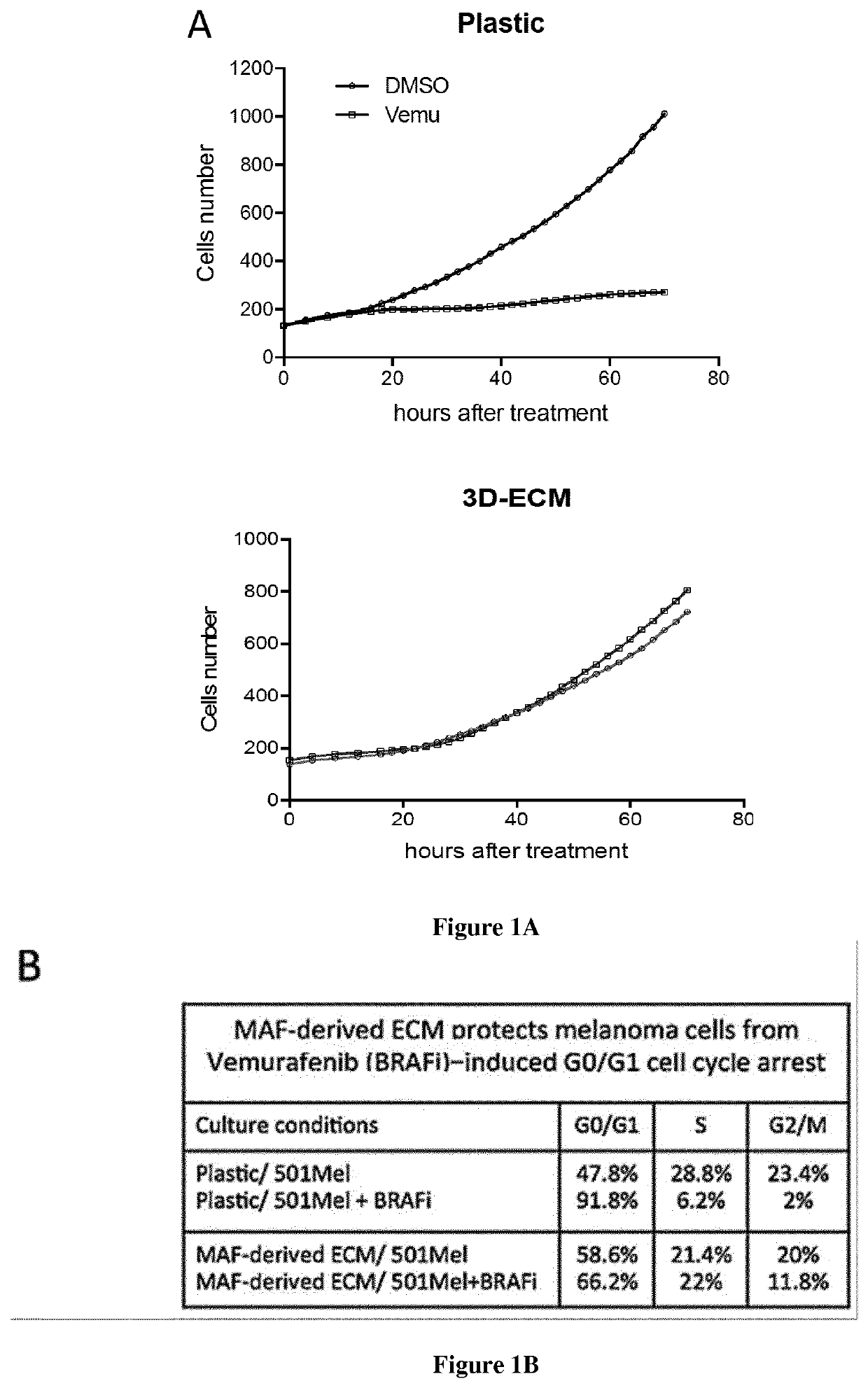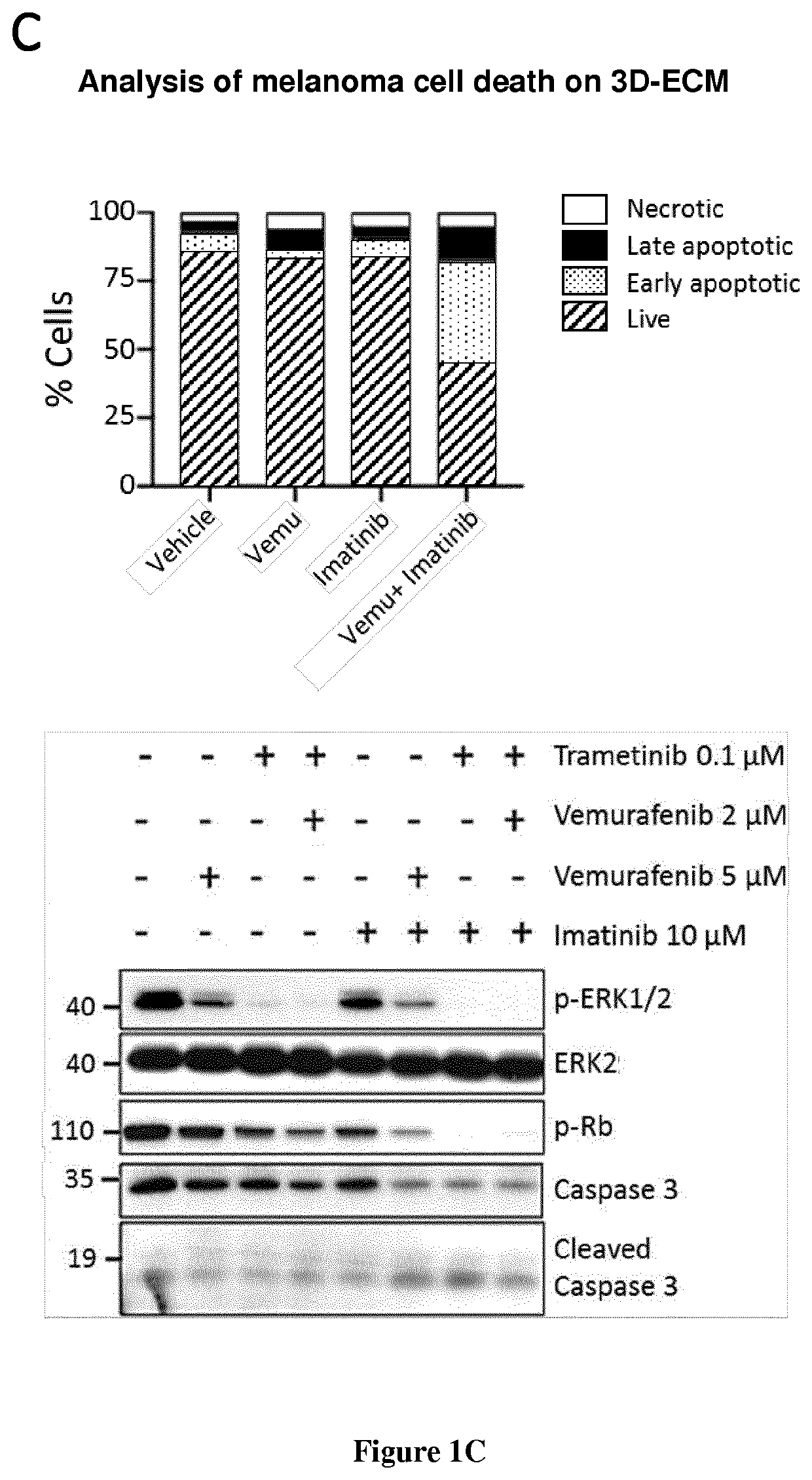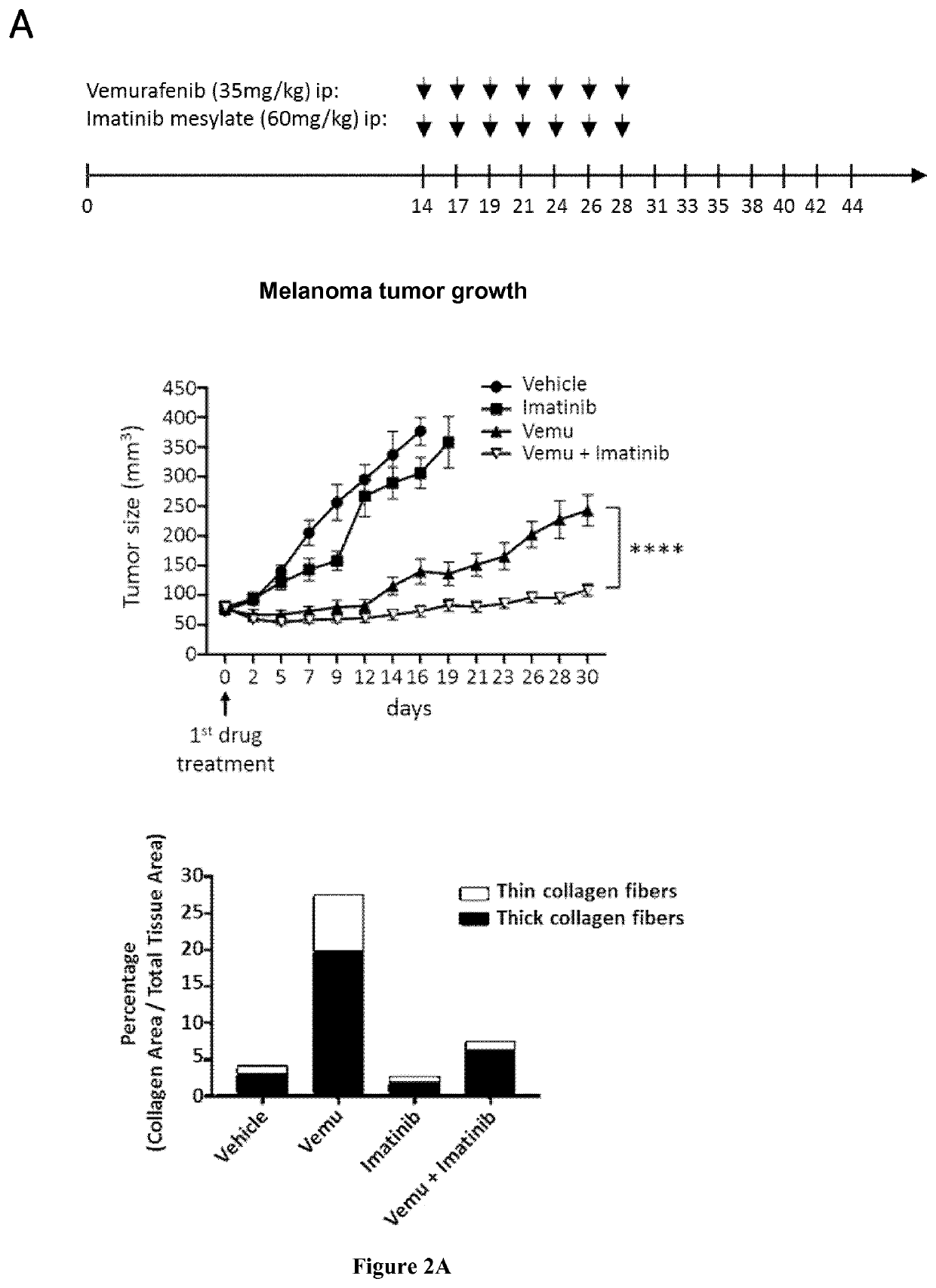Compositions for treating melanoma
a technology of compositions and melanoma, applied in the field of oncology, can solve the problems of matrix-mediated drug resistance (mm-dr) in response to targeted therapies, and the nature of ecm receptors that drive the mm-dr phenotype in melanoma, and have not been addressed in detail
- Summary
- Abstract
- Description
- Claims
- Application Information
AI Technical Summary
Benefits of technology
Problems solved by technology
Method used
Image
Examples
example
[0085]Material & Methods
[0086]Cell and Reagents
[0087]Melanoma cells and MAFs were cultured in Dulbecco's modified Eagle Medium (DMEM) plus 7% FBS (Hyclone). Culture reagents were purchased from Thermo Fisher Scientific. All other reagents were purchased from Sigma-Aldrich unless stated otherwise. PLX4032 (Vemurafenib), GSK1120212 (Trametinib), RO5126766, Imatinib mesylate, Nilotinib were from Selleckem. Collagen I rat tail was from Thermo Fisher Scientific.
[0088]RNAi Studies
[0089]Non-targeting control, DDR1 and DDR2 siRNA duplexes were designed by Invitrogen (Thermo Fisher Scientific). Transfection of siRNA was carried out using Lipofectamine RNAiMAX (Thermo Fisher Scientific), at a final concentration of 50 nM.
[0090]Cell-Derived Extracellular Matrix (ECM) Preparation and MM-DR Assay
[0091]Gelatin-coated tissue culture dishes were seeded with fibroblasts and cultured for 8 days in complete medium, supplemented with 50 μg / ml ascorbic acid every 48 h. Cell cultures were then washed wit...
PUM
| Property | Measurement | Unit |
|---|---|---|
| Electrical resistance | aaaaa | aaaaa |
Abstract
Description
Claims
Application Information
 Login to View More
Login to View More - R&D
- Intellectual Property
- Life Sciences
- Materials
- Tech Scout
- Unparalleled Data Quality
- Higher Quality Content
- 60% Fewer Hallucinations
Browse by: Latest US Patents, China's latest patents, Technical Efficacy Thesaurus, Application Domain, Technology Topic, Popular Technical Reports.
© 2025 PatSnap. All rights reserved.Legal|Privacy policy|Modern Slavery Act Transparency Statement|Sitemap|About US| Contact US: help@patsnap.com



